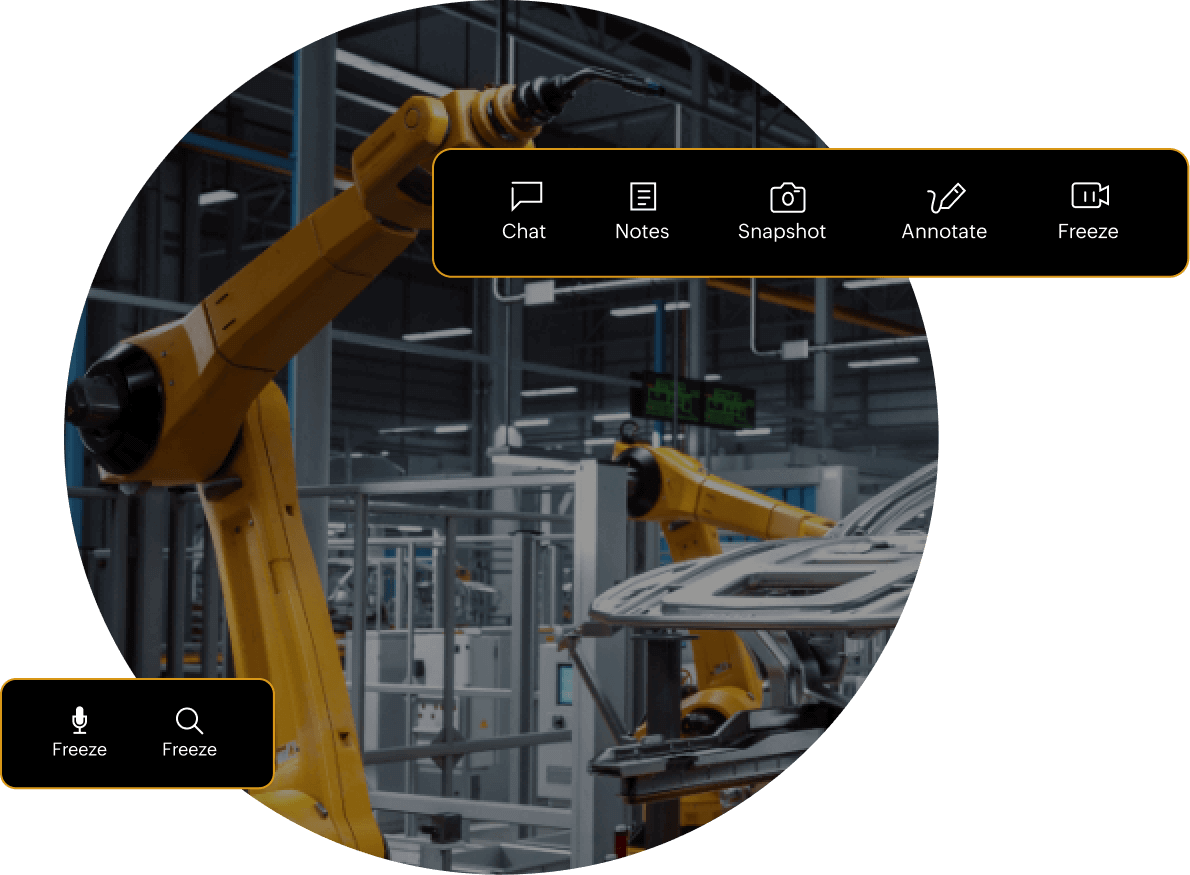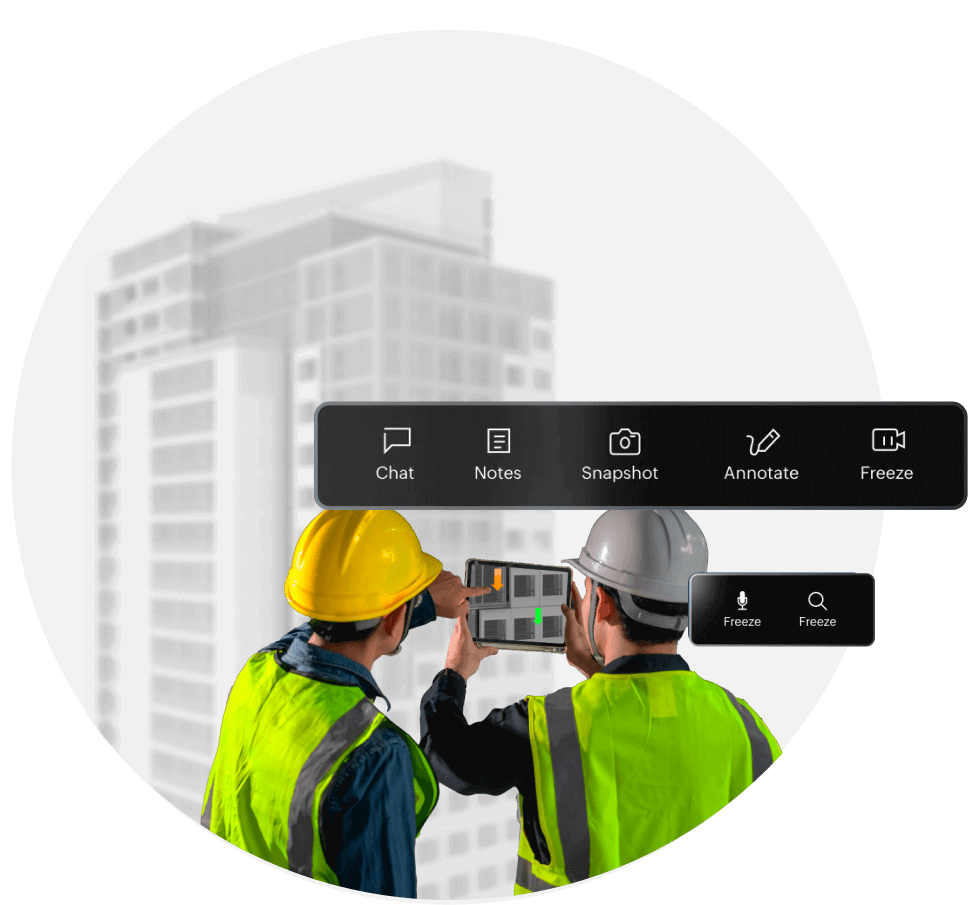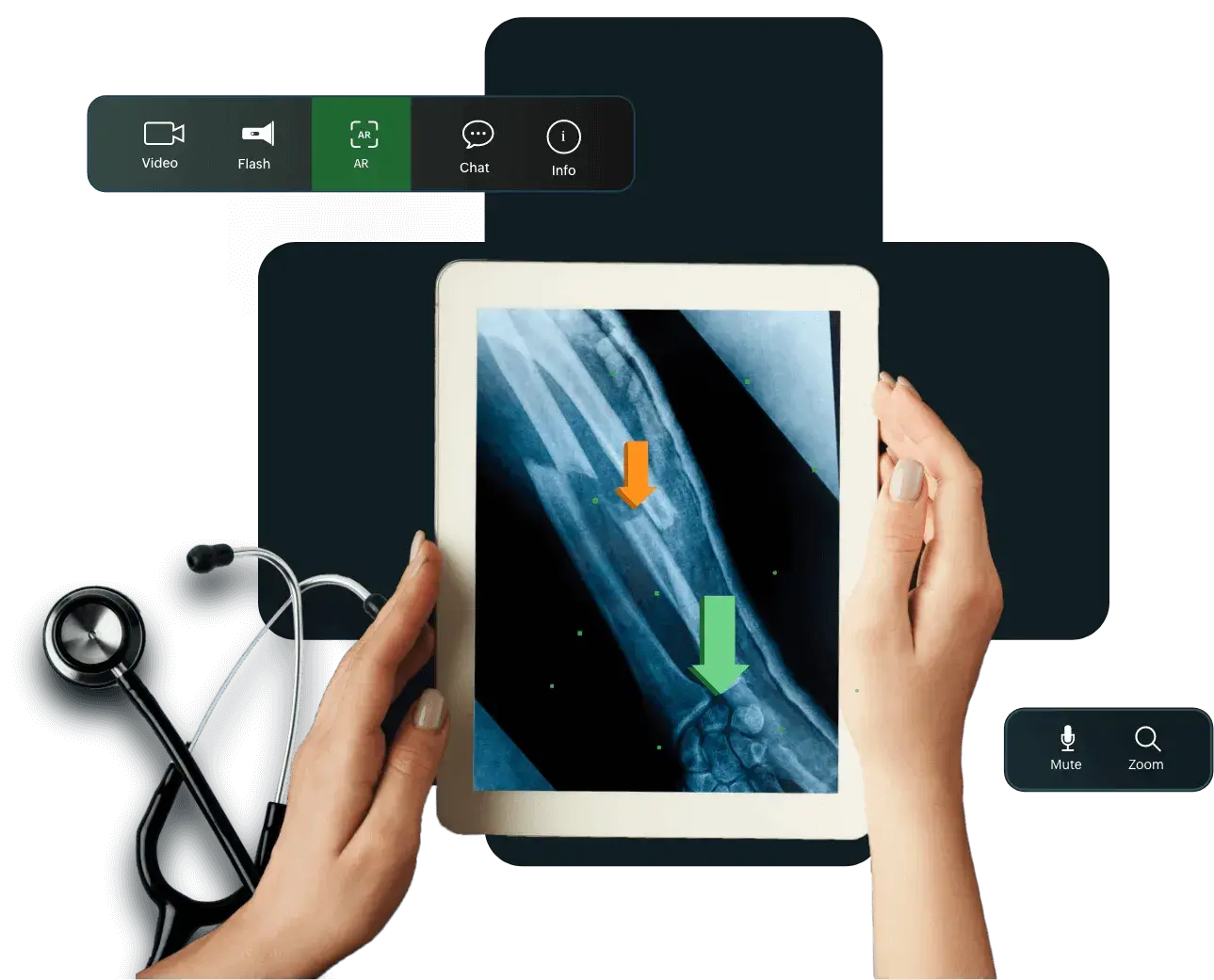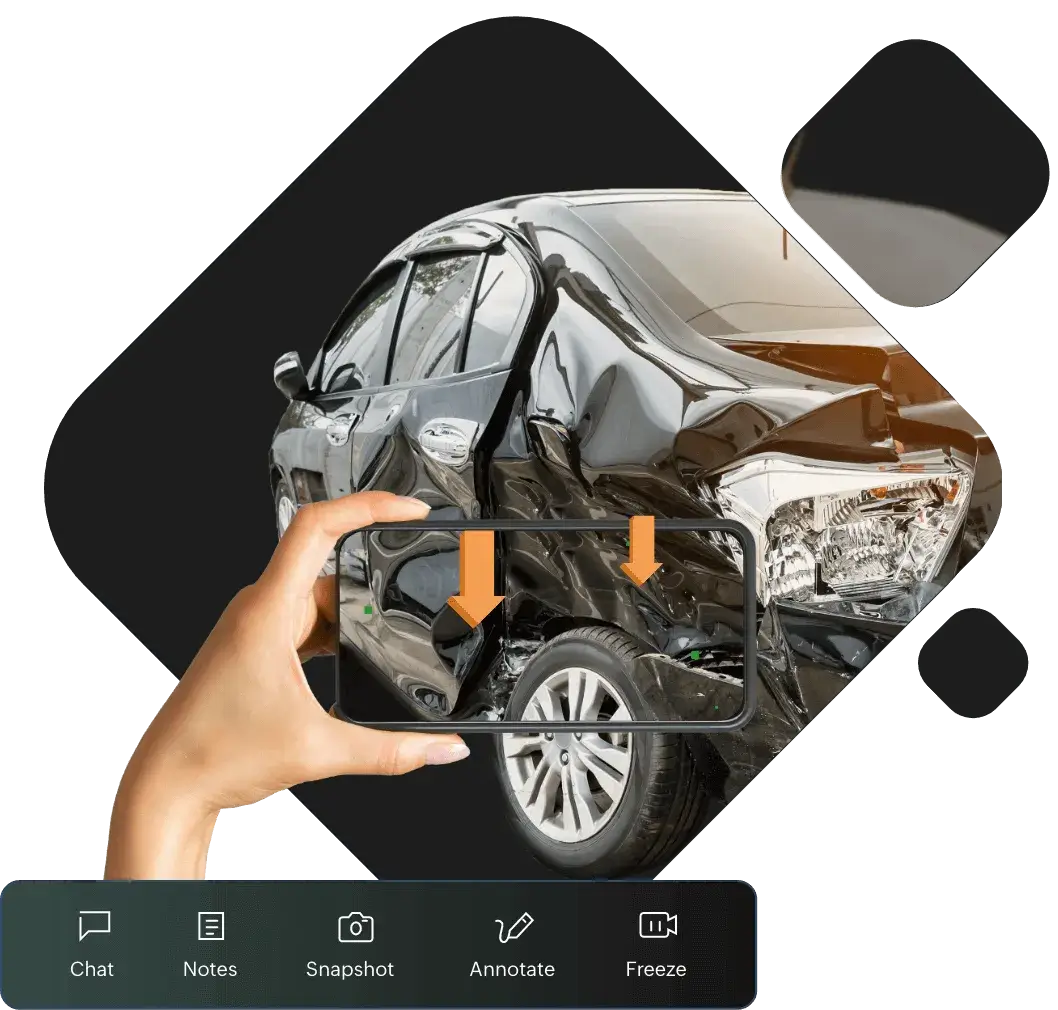What is AR software?
Augmented reality (AR) software is a revolutionary technology that allows a user to enhance their real-world view with digital elements for professional or entertainment purposes.
For example, an expert can guide a remote technician or a customer through a complex issue using spatial aids and augmented reality collaboration tools. The blend of the visual elements over the real-world view makes it easy for the user to provide an effective solution remotely.
Types of AR software
AR software can generally be categorized into the following types based on their functionality and purpose of development.
AR visualization software
This category includes applications and platforms that utilize AR technology to superimpose digital elements onto the real-world view, offering immersive experiences. These solutions rely on advanced computer vision, 3D modeling, and robust rendering technologies to achieve the desired effects. They serve a wide range of purposes, including remote assistance, training, education, gaming, navigation, and prototyping.
AR SDK
An augmented reality software development kit (SDK) is a comprehensive toolkit that includes Application Programming Interfaces (APIs), tools, and documentation, enabling developers to create their own AR applications. Provided by software companies or platforms, SDKs simplify the custom development process. ARCore and ARKit are two of the most widely used AR SDKs, designed for building AR tools on Android and iOS platforms, respectively.
AR content management software
This software enables content creators, AR designers, and developers to design, deploy, organize, and manage AR content, assets, and experiences. It facilitates collaborative workflows, streamlining the creation process across multiple teams. When integrated with AR development tools or SDKs, it allows developers to efficiently deploy AR content directly to their target AR applications.
Industrial AR platforms
Industrial AR platforms are tailored for industrial organizations seeking to enhance operational efficiency, workforce productivity, and safety through AR technology. These platforms integrate multiple types of AR software to address the unique needs of their workforce and overcome challenges across both office and field environments.
Here’s how enterprise augmented reality works.
If you have an AR-supported device, such as a smartphone, tablet, smart glass, or rugged device, and an enterprise augmented reality software like Zoho Lens, this is how it will work for you
01
Connect with the remote user.
Start a remote assistance session and invite the technician or customer via email or SMS.
02
See what your customer sees.
Once they join the session, you’ll get live visuals from their smartphone camera, synchronizing every movement and change in their field of view.
03
Collaborate in AR.
You can use different AR tools, such as arrows, to diagnose and highlight the issue and relay visual instructions. These digital elements will remain fixed where you place them, allowing the remote user to move freely while following your instructions.
04
Manage your remote workforce.
As a super admin, you can create departments for your technicians, assign roles for all organization members, and get detailed insights on the remote sessions being conducted in your organization.
Solve problems quickly using augmented reality software.
By using AR software, service providers can reduce the frequency of onsite visits, allowing technicians to identify and solve the issue from their desk. Even when technicians face complex issues, they can gather crucial information, equip themselves with the necessary equipment beforehand, and solve the issue—all in one visit.
Other benefits of using augmented reality software include:
- Enhanced customer experience
- Reduced machinery downtime
- Improved first-time fix rates
- Immersive training and support
- Effective time/cost management
How to choose the best AR software.
Based on your operational and workforce needs, you need to look for a solution that provides the best return on investment (ROI) through various factors such as minimal setup, short learning curves, and optimized usage. Let's explore the key features in Zoho Lens, one of the best augmented reality (AR) software platforms, and how you can leverage them to suit your needs.
Live camera streaming
Remote users can use their device camera to stream their physical environment to an expert and get live assistance for solving their issue. In turn, the expert can freeze the live stream for in-depth analysis and record the process for future reference.
Collaborative AR tools
Experts can collaborate with remote users using in-session AR tools such as AR annotations, AR comments, and AR measurements. They can get vital information using optical character recognition (OCR) and virtual code readers on product labels.
Multi-participant sessions
When more hands are needed on deck, the technician can invite their colleagues to take a look at the issue and provide their input. They can even turn it into a live training session by inviting new recruits or trainees to the session.
Smart-glass support
Epson, Vuzix, RealWear, Apple Vision Pro, and Meta Quest smart glasses support augmented reality software like Zoho Lens, allowing field service technicians to work hands-free while receiving instructions from AR tools.
Dynamic integrations
Integrate Zoho Lens with Zoho CRM, Zoho Desk, Zoho SalesIQ, Zendesk, and Jira or use the Lens mobile SDK to integrate with your native apps for effective customer service.
Flexible customizations
Along with remote assistance capabilities, service providers can customize their augmented reality software with email templates, custom domains, and other rebranding options to match their business identity.
Insightful analytics and knowledge trails
While technicians and experts take care of your customers, you can manage your remote operations and improve workflow efficiency with session analytics. Admins can also access chat transcripts, snapshots, and session recordings for internal training and audit purposes.
Top-tier security and compliance
Data protection and organizational security are crucial when handling remote services. Zoho Lens is GDPR and HIPAA compliant, and helps you ensure secure connections with industry-standard SSL and 256-bit AES protocols.
Who uses AR software?
Many industries experience a paradigm shift towards enhanced efficiency, accuracy, and safety in their operations when they use AR software for their operations. Here's a list of the various industries that have simplified their remote processes with AR technology.
Automotive
Automotive technicians can use AR for vehicle diagnostics, repair guidance, and maintenance procedures. They can also guide workers through complex assembly processes in manufacturing to ensure accuracy and reduce errors.

Aviation
Ground crews can effectively improve coordination and safety during aircraft marshaling, loading and unloading procedures, maintenance and repair, and ground handling operations with the best AR software.

Retail
With an augmented reality software, retailers can oversee their warehousing operations, provide virtual product demonstrations, showcase features, and resolve customer inquiries quickly.

Construction
AR software helps supervisors conduct safety inspections, interact with stakeholders during each stage of construction, and get visual feedback, no matter where they’re located.

Healthcare
Along with conducting remote consultations with their patients, medical professionals can get visual remote assistance from device manufacturers to repair minor issues in medical devices.

Insurance
Using augmented reality software, insurance companies can conduct remote evaluations and validate claims faster, reducing onsite visits and speeding up customer payments.
